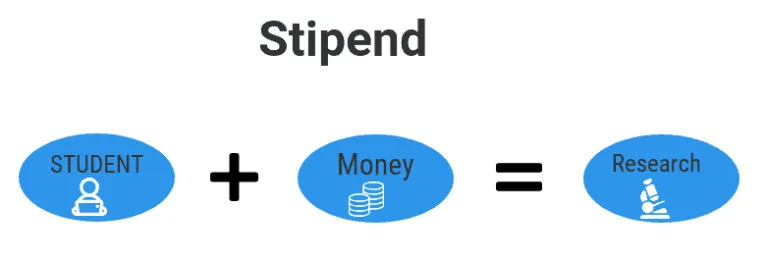

5 Things Universities can implement for improving Indian Education System
Indian Education System is shaping up bright students for building future India. Progress of 70+ years has been encouraging. The no. of educated people have increased substantially and literacy rate stands around 80 to 85%.
Demographic Dividend
India’s population is around 1.2 Billion and median age is 26 years. Majority of the population is young and looking forward to contribute for nation building.
India should be able to take advantage of its demographic dividend. In today’s date, it is clear that rest of the world’s major economies like USA, China, Europe have aging population and India has the avail of its young population.
Education can make this dividend as superpower and it can help India to take steps towards developed economy.
India’s Education Investment in proportion to GDP

Source : Wes.org ( BRICS Joint Statistical Publication 2017)
If you compare India’s investment in proportion to GDP , it is less than 3%. It is very minimal compared to many developed or developing nations.
Indian Govt. needs to improve this ratio and provide world class education which can fuel growth for innovation.
No. of Patents Filed
If you evaluate no. of patents filed by particular nation, it is clearly indicating that nation which is spending high on education is filing highest number of patents.
Here are top 10 countries filing highest no. of patents

Source : Statista.com
Patents indicate ability of the society or nation related to innovation. More innovation is directly proportional to building reputed technology companies and more jobs creation and growth to nation’s GDP.
Above statistic indicates that even though India is one of the top 5 economies in terms of GDP, it is not in top 10 in terms of number of patents filed.
Universities need to encourage research work and need to shift focus towards more elective and research oriented subjects and topics.
Number of Phd holders should also be increased. In today’s scenario most of the students who want to pursue PhD go to developed nation like USA, Europe. This is talent migration and contribution significantly to the growth of other developed nations.
India needs to encourage and create conducive environment for PhD and research oriented work.
What Universities can do to encourage research?

1.Hold Competitions
The institutes can try to hold various research related competition. These competitions will attract students and researchers from all over with their own new inventions.
Western Kentucky University is an institution which every year organised a kind of research fair. They call it the ‘The Annual meeting of Kentucky’s Science academy’ . They have been holding this event since 2015. This enables the various analyst around to come forth and display their analysis. Their mission is to foster the scientific discovery and understanding in Kentucky.
2. Provide Higher Stipend for Research Scholars

The stipend rates given in India were very less compared to the ones being given in other countries. According to certain surveys, the aggregate amount of given stipends till now was 25,000 rupees per month.
This amount is very less when it comes to research. With the increasing inflation rates in the market, the amount of stipend too needed to be risen. According to latest statistics, the stipends have risen to 40,000 rupees per month.
3. Have industry Tie up to fund research work

UIC (University Industry Collaboration) is a legit thing trending these days. Industries and Universities come into an agreement where the universities can get funding for their research.
The industries too get their technology exchange too. This scheme doesn’t just give the industries new ideas but also proves to be a great aid for the universities.
The universities can provide ample money to the new research conducted by their students. The Business School of UK has recognized this scheme to be very helpful.
4. Invite experts to talk about research

An extremely motivational implementation that colleges can initiate is to add to their curriculum guest lectures by research experts. When the experts will share their experiences with the students, it will motivate them with their projects too. They will be able to interpret their direction of work.
They can analyse which steps are wrong which are right. The Hokkaido University of japan is one of the most famous institute to regulate such sessions very often.
5. Generate awareness about Patents among students
Intellectual Property or commonly known as Patents are basically the exclusive right granted over a certain invention. In India, there is a lack of knowledge about the filing of patents.
According to K S Kardam, deputy controller of patents and designs and head, Patent office Delhi, Union ministry of commerce and industry,
India is way behind in terms of IP applications globally. In 2010, about 4,90,226 patent applications were filed in USA; 3,91,177 in China; 344,598 in Japan; 59,254 in Germany; and mere 39,400 in India.
Almost 80% of China’s patents were filed by small scale industries.
6. Digital Education

Digital education can eliminate infrastructure woes of India where there is scarcity of good teachers. India can encourage digital/ online education for students specially located in rural India. It can help them to learn even though there is no physical availability of the teacher.
Digitization of education can turn out to be a great boon for the education system of India. Majority of the crowd being of economically challenged. Education technology is undeniable cheaper compared to the date’s system. This can result in automation of education.
One can only imagine the level of literacy this will gain for the country.
7. Educating Teachers
A huge leap to change Indian education system will be to change, like drastically change the age old algorithms of teaching. Every person being different, his capacity and way to grasp knowledge is also different. This is where personalized education comes into view.
When any student gets personal attention, his performance definitely boosts. The teachers should be taught to understand the psychology of of the student and then teach him according to his comprehension.
Another action that can change education is to focus on technical education. Bypassing the time-worn teaching methods, teachers should switch to adapting technology.
Today’s generation being tech-savvy, it will be immensely easy to teach them technically. For example, using videos, presentations, to make them understand the terms much better.
Conclusion
By the looks of today’s education system, it is clear that India lacks tremendously in keeping up with the world. If we want to run in the race of becoming a developed country, we have to raise our bar of education. It is extremely essential that we have a very well educated population.
Meaning, we have to make sure that the literacy rate in our country has to be elevated. In order to do so, the procedure of teaching should be interesting so that it attracts more and more knowledge seekers.
The more rational, functional & workable the education, the more it is easy to apply in one’s work. This also increases the productivity of the individual.
Bottom line, by adopting the methods we apprehended above, India can turn Education System to Education technology.
Author:
Swapnil is founder and Director of Award Winning EdTech Company Splashgain







